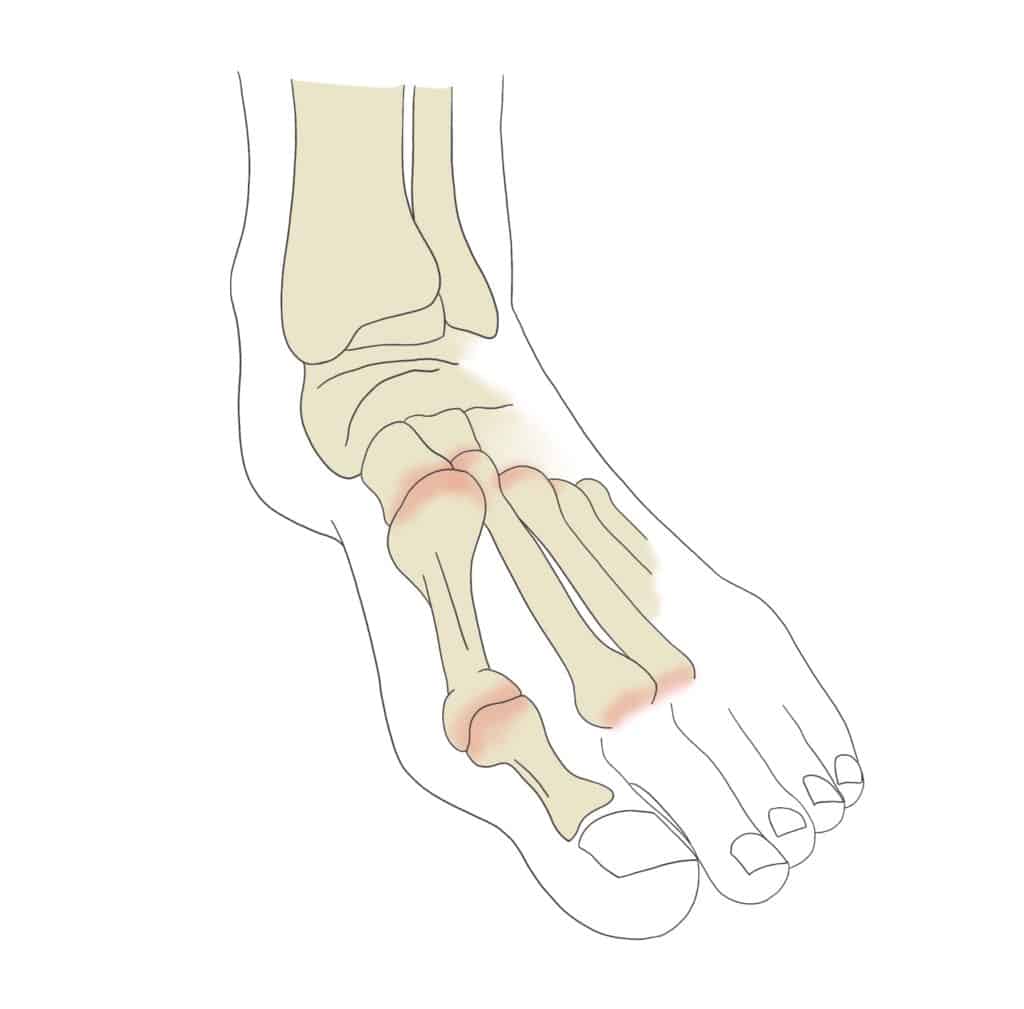Ankles & Feet
Safe and effective treatment targeted at specific conditions to help manage ankle and foot problems.
Tarsal Tunnel Syndrome
The Tarsal tunnel is located on the inner ankle and is formed by the ankle bones and a band of ligaments. Tarsal tunnel syndrome occurs when the posterior tibal nerve is compressed in this tunnel. This compression can cause tingling, pain or numbness in the foot.
The causes of Tarsal tunnel syndrome include flat feet or dropped arches, swelling due to an ankle sprain, diabetes and arthritis.
Also within the tarsal tunnel is an artery, a vein and a few important tendons. Inflammation of these tendons can also cause inflammation and irritation to the posterior tibial nerve.
Osteopathic treatment can help reduce inflammation in the area by mobilising the surrounding joints, improving circulation and reducing muscle tone in the lower leg.
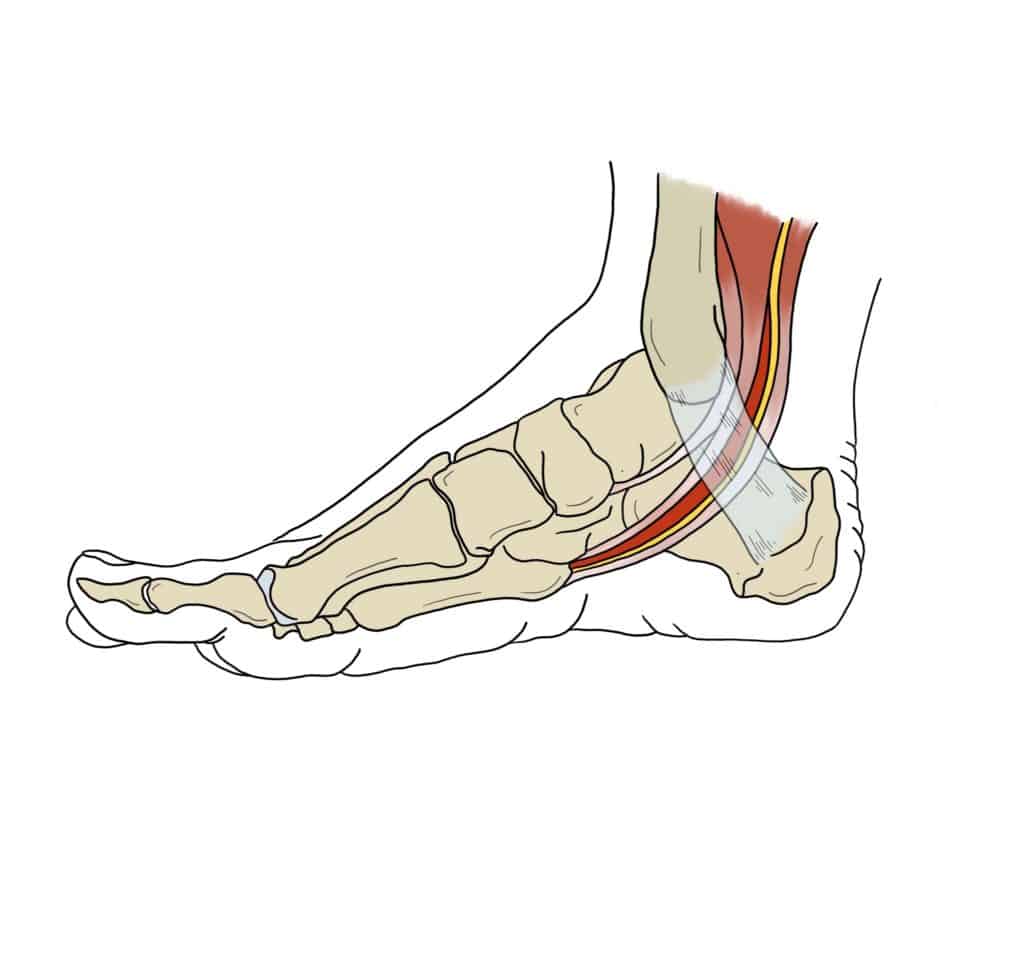
Ankle Sprain
Ankle sprains are among the most common of all sports-related injuries. The ankle is a highly complicated joint made up of many bones, ligaments, muscles and tendons. A sprain usually occurs after sudden, forceful twisting motions through the ankle, causing the ligaments to stretch beyond their elastic capability.
This ligament damage will usually cause swelling, pain and stiffness in the ankle. There may also be bruising.
If you sprain your ankle, please call us, and one of our osteopaths will be able to explain the best initial management of an acute injury.
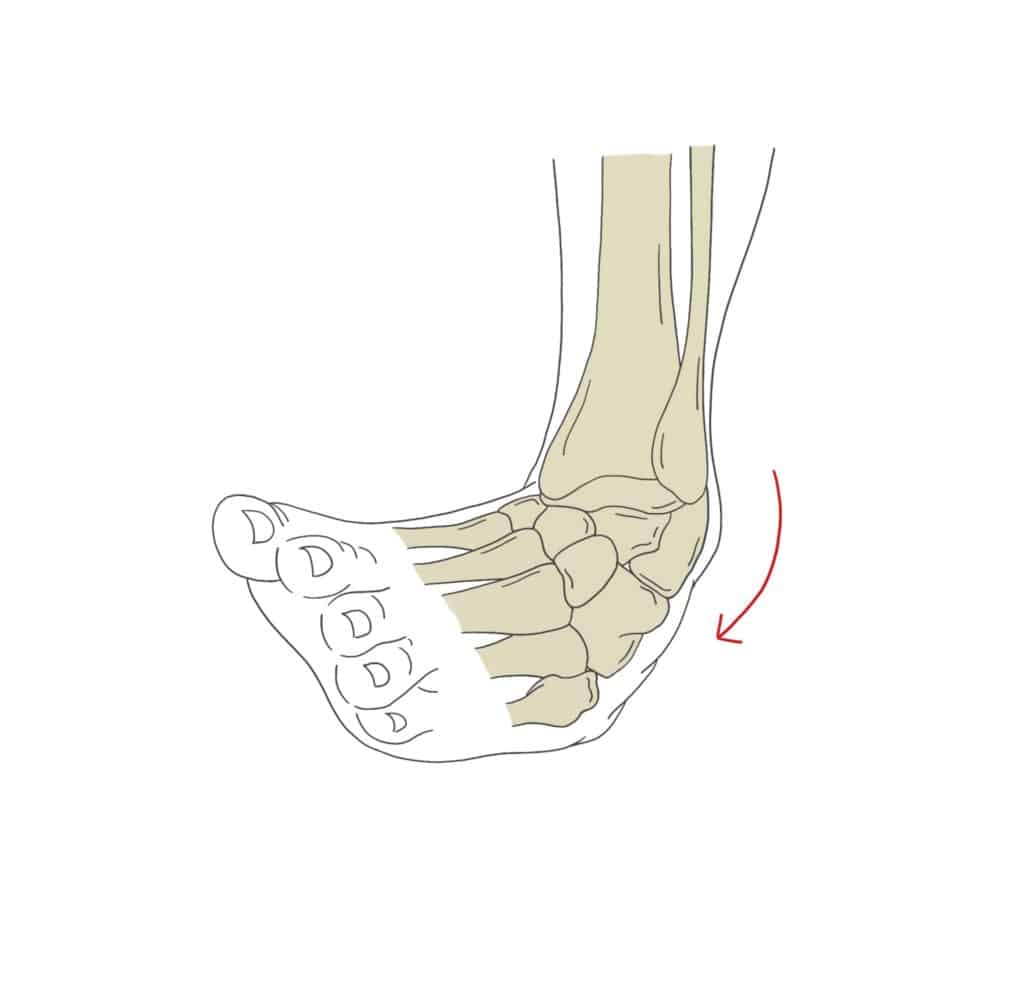
Achilles Tendinitis
The Achilles tendon attaches your calf muscles to your heel. Overuse or overstretching of this tendon can cause Achilles tendinitis which will present as pain in the back of the calf or ankle, usually when walking or running.
It is usually caused due to repetitive or intense strain on the tendon such as when we jump or push off to start running. Our Achilles tendon deteriorates with age, making injury more likely. People who wear inappropriate or ill-fitting footwear or those who fail to warm up correctly are also at higher risk. Athletes who increase the intensity of their training too fast also risk injury.
Osteopathy and Laser therapy can help speed up the healing process of Achilles tendinitis. It can also help to prevent the reoccurrence of the injury.
Someone with multiple episodes of Achilles tendinitis is more susceptible to Achilles tendinopathy; a chronic, degenerative condition with similar characteristics to Achilles tendinitis, but more difficult to treat. Shockwave therapy has been shown to be very effective at treating Achilles tendinopathy.
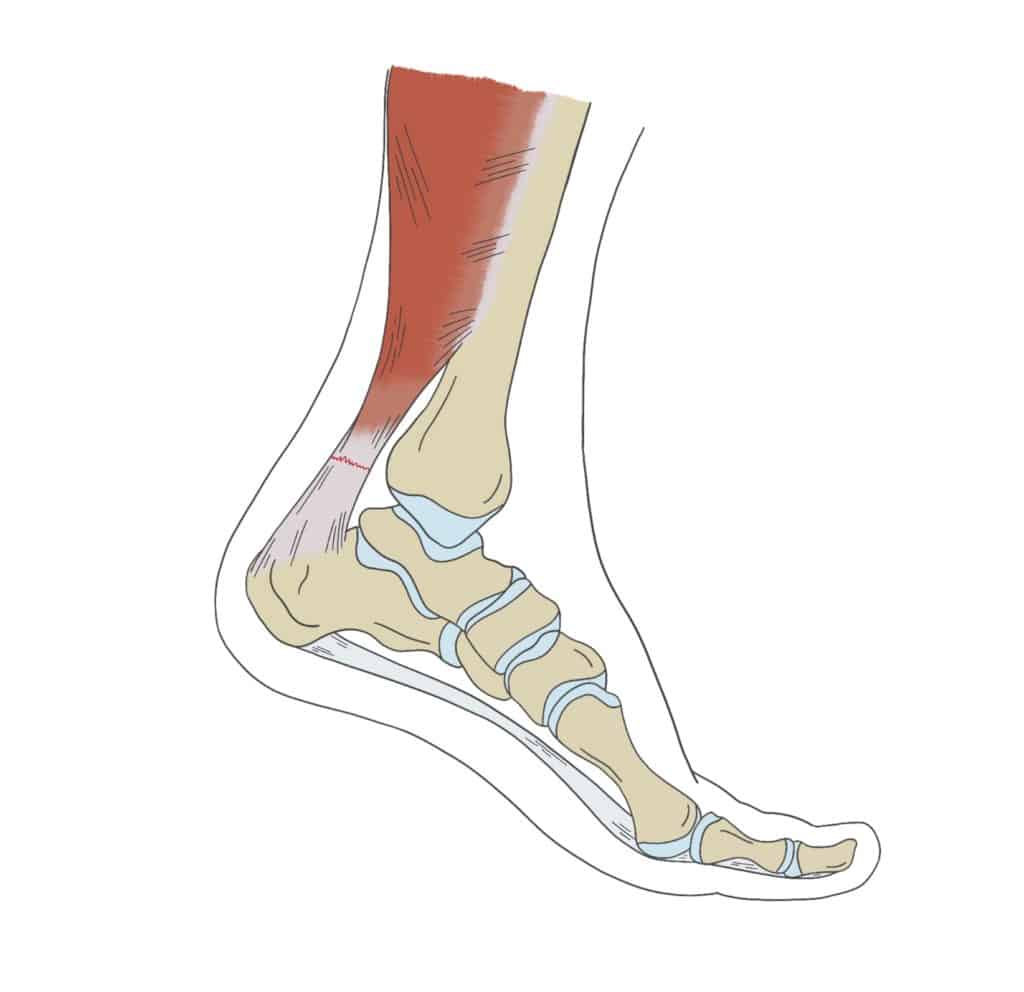
Plantar Fasciitis
The plantar fascia is a band of tissue on the sole of the foot that stretches from our heel to the ball of our foot. It absorbs impact when we are walking and running. When this fibrous band of tissue if inflamed it causes pain in the heel and arch of our foot. The pain is usually worse when you first get out of bed in the morning or after long periods standing or walking.
There are many risk factors and causes for plantar fasciitis including poor footwear, jumping or running activities and being overweight.
Osteopathic treatment and shockwave therapy can help to reduce recovery times, however, plantar fasciitis still usually takes months to recover. Untreated plantar fasciitis will usually worsen. You may also experience knee, hip and back problems as a result of compensations made by the body.
Stress fractures can present similarly to plantar fasciitis. If your symptoms are do not improve with treatment, we will sometimes refer to the GP for an x-ray in order to rule out a stress fracture.
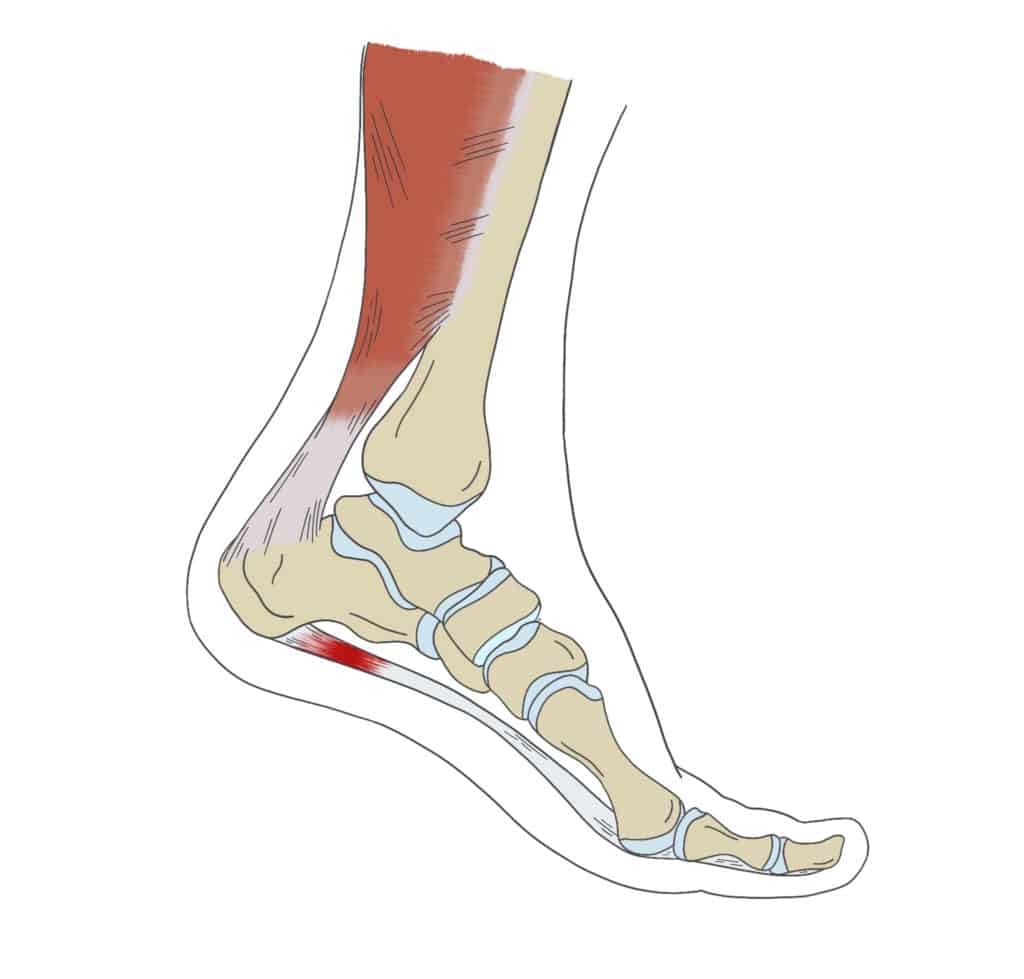
Stress Fractures
Usually occurring in the metatarsal bones, stress fractures are tiny cracks in the bones caused by repetitive trauma, such as running long distances, repetitive jumping or using poorly fitted footwear.
Stress fractures are nearly always painful, and are occasionally accompanied by swelling and bruising. You may not be able to weight bear through that foot. They are diagnosed by x-ray.
We generally advise resting the foot until the injury has fully healed or risk longer-term pain. Shockwave therapy has been shown to help improve bone remodelling and thus healing the fracture site faster. Laser therapy has also been shown to improve healing times of fractures sites. Once healed, Osteopathy can help to mobilise surrounding joints which will have been compensating during the healing process.
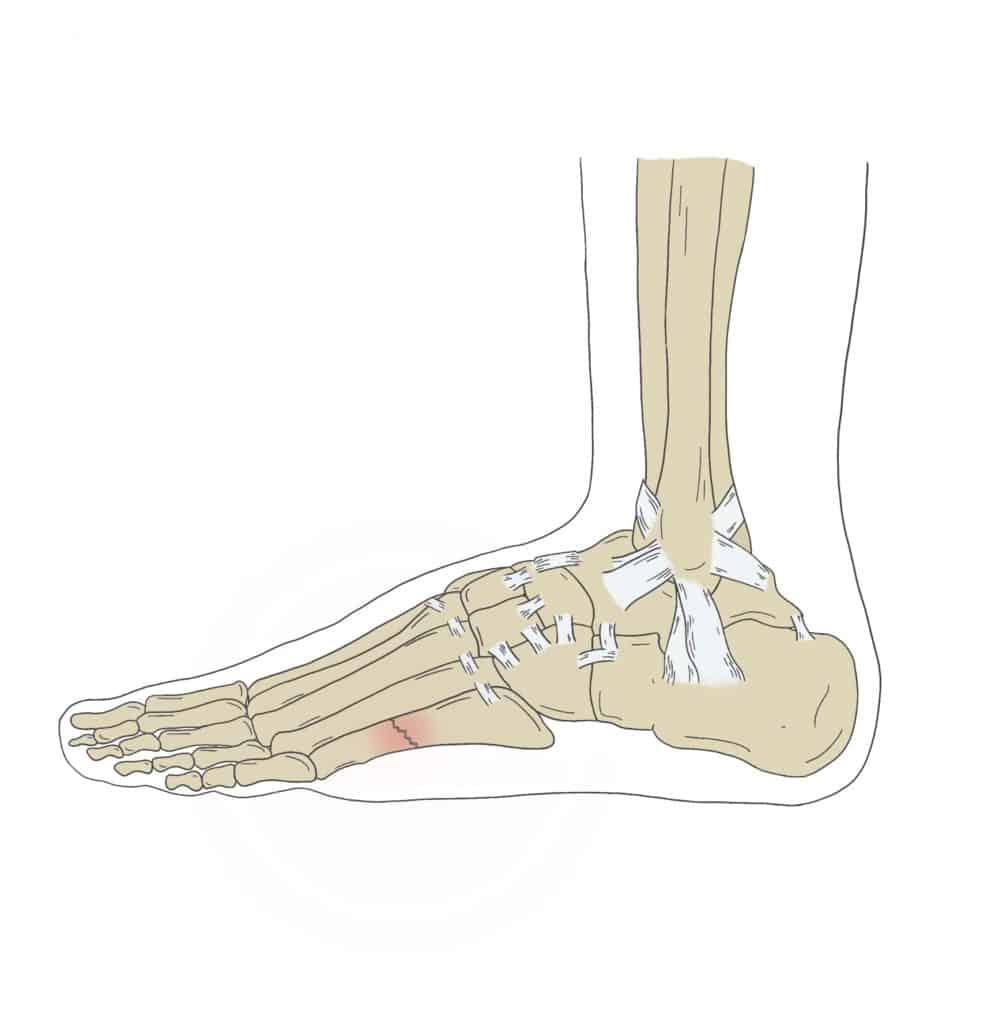
Arthritis
Osteoarthritis is a common condition that causes pain and inflammation in a joint. Often referred to as ‘wear and tear’ of the joint, it can occur at any age as a result of an injury but is most common in people over the age of 45.
The cartilage within the joint becomes thinner, meaning that there is more friction. Osteoarthritis is a normal, natural part of the ageing process and many people with it will suffer no symptoms at all! However, when osteoarthritis is symptomatic, patients complain of stiffness, reduced range of movement and pain on activity.
There is no cure for osteoarthritis; however, osteopathy can offer symptomatic relief for many patients. Osteopathy can help to increase range of movement available in the joint, decrease pain and improve function. Laser therapy has also been shown to be effective in reducing pain associated with arthritis. We are also able to offer “pre-hab” for those patients awaiting a joint replacement
We can also get a type of arthritis called rheumatoid arthritis; this can affect multiple joints in our body at the same time. If our osteopaths suspect you have rheumatoid arthritis they will refer you to the GP for a blood test to confirm this. We can still treat patients once they have been diagnosed with rheumatoid arthritis and they can get a lot of symptom relief from osteopathic treatment, however it is more complex than osteoarthritis due to it’s nature and usually requires a combined treatment approach with your GP.
